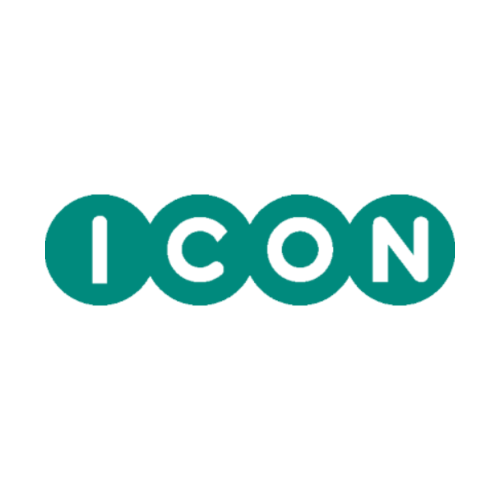.png?v=85f6f8cec6cce000ef78d8afa28c2b6d)
Patient Centricity in Clinical Research

Patient Centricity in Clinical Research: What it is and Why it Matters
In the past, clinical research was designed around the needs of sponsors, researchers, and regulatory bodies. Patients were often viewed primarily as study subjects, with limited involvement in the design or implementation of trials. Today, that approach is evolving. Patient centricity has emerged as a driving principle in modern clinical research, reshaping how studies are conducted and, importantly, how patients experience them.
What is Patient Centricity?
Patient centricity in clinical research refers to designing and conducting studies with the patient at the core. This means involving patients not just as participants, but as partners throughout the research process, from trial design to post-study follow-up. It focuses on understanding and responding to the real-world needs, preferences, and experiences of patients.
This shift is not just philosophical. Patient-centric approaches can lead to more efficient trials, better data quality, and higher retention rates. Most importantly, they contribute to treatments that are more relevant and impactful for the people who use them.
Why Patient Centricity Matters
Improves Trial Participation and Retention: Traditional trials often place heavy burdens on participants: frequent clinic visits, long travel times, complex protocols. By incorporating patient feedback, trials can be designed to reduce these barriers. This can lead to better recruitment and lower dropout rates.
Enhances Study Design: Patients offer insights that researchers might miss. For example, a protocol may look solid on paper but be impractical in the real world. Involving patients early helps refine protocols, reduce protocol amendments, and ensure that study outcomes reflect what truly matters to patients. Generates More Relevant Data: When patients are central to trial design, the endpoints and data collected are more likely to reflect real-world health outcomes. This makes the research more applicable to everyday clinical practice. Builds Trust: Involving patients meaningfully fosters transparency and trust. Participants who feel respected and valued are more likely to engage with the research process and become advocates for the study.Key Elements of a Patient Centric Approach
Patient Advisory Boards: These groups provide insights into study design, informed consent forms, and communication materials. Their input helps ensure that studies are understandable and manageable for participants.
Simplified and Accessible Communication: Using plain language in consent forms and study documents helps participants make informed decisions. Multimedia tools such as videos, infographics, and apps can enhance understanding and engagement. Decentralized Clinical Trials (DCTs): Technology-enabled studies allow participants to take part from home or local clinics, reducing the travel and time burden. This model has grown significantly, especially since the COVID-19 pandemic. Wearables and Remote Monitoring: These tools let researchers collect real-time data while minimizing clinic visits. They can also give patients more insight into their own health during the trial. Post-Trial Engagement: Many participants want to know the results of the study they joined and how their contribution made a difference. Patient-centric trials prioritize follow-up and result sharing.Challenges & Considerations
While the benefits are clear, patient centricity is not without challenges. Incorporating patient input takes time and resources. Regulatory constraints can limit flexibility. There's also the risk of tokenism: including patients in name only, without giving them real influence.
To be effective, patient engagement must be intentional, structured, and sustained. This means investing in training for researchers, establishing clear frameworks for involvement, and ensuring diverse patient representation.The Role of Technology
Digital tools have become essential to enabling patient-centric research. Platforms that support remote data collection, eConsent, telemedicine visits, and patient apps are helping bring trials to where patients are. These tools can also improve data accuracy and reduce administrative burdens.
However, technology must be used thoughtfully. Not all patients have equal access to devices or internet connectivity. Solutions must be inclusive, with options for those who are less tech-savvy or digitally connected.Patient Centricity at ICON
At ICON, patient centricity is a fundamental part of how we design and run clinical trials. Our Patient Centered Services are designed to embed the patient perspective throughout the trial lifecycle. We use insights from patient advisory panels, develop patient-friendly materials, and implement flexible trial designs that prioritise participant convenience and comfort.
We also invest in tools and technologies that support decentralized trials and remote monitoring. Our goal is to meet patients where they are: geographically, emotionally, and logistically.Future Outlook
The future of clinical research is undeniably patient-centric. As regulators, sponsors, and CROs align around this model, we can expect to see trials that are faster, more inclusive, and more impactful. But achieving this future requires more than good intentions. It demands a commitment to listening, adapting, and co-creating with patients.
For those entering the field or looking to build a career in clinical research, understanding and embracing patient centricity is crucial.
Conclusion
Patient centricity represents a shift from "research on patients" to "research with patients." It puts human experience at the heart of science. As the industry continues to evolve, so too must our methods, our mindsets, and our measures of success. By truly centering the patient, we make clinical research not only more ethical but more effective.
At ICON, we are proud to be at the forefront of this transformation. We invite those passionate about innovation, empathy, and impact to join us in shaping the future of clinical research. View our current openings at ICON today.Sign up for post alerts
ICON & You
The potential of together.
Careers that improve the lives of patients, our clients and each other. Are you ready to make a difference?
View jobsRelated jobs at ICON
Salary
Location
US, Blue Bell (ICON)
Location
Blue Bell
Remote Working
Remote
Business Area
ICON Strategic Solutions
Job Categories
Patient Recruitment
Job Type
Permanent
Description
We are currently seeking a Patient Recruitment Lead to join our diverse and dynamic team. As a Patient Recruitment Lead at ICON, you will play a critical role in driving patient recruitment strategies
Reference
JR140650
Expiry date
01/01/0001

Author
Brandon Pupek
Author
Brandon PupekSalary
Location
US, Blue Bell (ICON)
Location
Blue Bell
Remote Working
Remote
Business Area
ICON Strategic Solutions
Job Categories
Clinical Operations
Job Type
Permanent
Description
We are currently seeking a Clinical Associate to join our diverse and dynamic team. As a Clinical Associate at ICON, you will play a pivotal role in supporting the design, implementation, and manageme
Reference
JR140515
Expiry date
01/01/0001

Author
Brandon Pupek
Author
Brandon PupekSalary
Location
US, Blue Bell (ICON)
Location
Blue Bell
Remote Working
Remote
Business Area
ICON Strategic Solutions
Job Categories
Clinical Operations
Job Type
Permanent
Description
We are currently seeking a Clinical Associate to join our diverse and dynamic team. As a Clinical Associate at ICON, you will play a pivotal role in supporting the design, implementation, and manageme
Reference
JR140514
Expiry date
01/01/0001

Author
Brandon Pupek
Author
Brandon PupekSalary
Location
US, Blue Bell (ICON)
Location
Blue Bell
Remote Working
Remote
Business Area
ICON Strategic Solutions
Job Categories
Clinical Operations
Job Type
Permanent
Description
We are currently seeking a Clinical Associate to join our diverse and dynamic team. As a Clinical Associate at ICON, you will play a pivotal role in supporting the design, implementation, and manageme
Reference
JR140511
Expiry date
01/01/0001

Author
Brandon Pupek
Author
Brandon PupekRelated stories
.png)
Teaser label
Our PeopleContent type
BlogsPublish date
12/10/2025
Summary
Zhong Yao's Journey at ICON Plc in China Zhong Yao's career in clinical research spans over two decades, with leadership roles across major CROs and a commitment to advancing healthcare in China.
.png)
Teaser label
IndustryContent type
BlogsPublish date
12/01/2025
Summary
How Data Moves Through a Clinical Trial Clinical research depends on one essential element: trustworthy data. Every safety decision, every statistical conclusion and every regulatory submission i
.png)
Teaser label
IndustryContent type
BlogsPublish date
11/28/2025
Summary
Quality and Compliance for New Entrants: A Plain Language Guide Quality and compliance can feel like dense subjects when you are entering clinical research for the first time. Many job
Recently viewed jobs
Impactful work. Meaningful careers. Quality rewards.
At ICON, our employees are our greatest strength. That’s why we are committed to empowering you to live your best life, both inside and outside of work. Whether your ambition is lead a global team, become a deep scientific or technical expert, work in-house with our customers or gain experience in a variety of different ICON functions, we will support you in realising your full potential. Learn more about Our Culture at ICON
